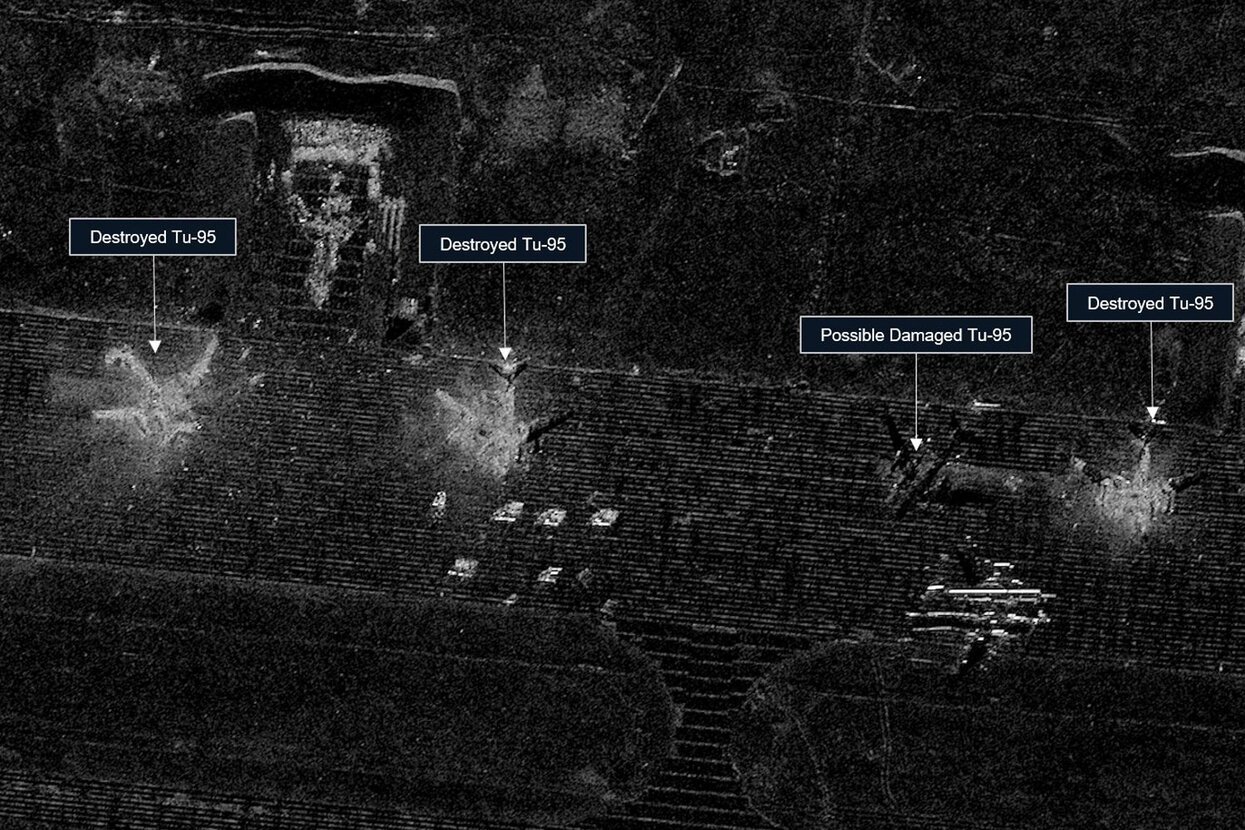
The Evolving Cost of War and the Rise of Irregular Tactics
Written by Aries D. Russell
The Evolving Cost of War and the Rise of Irregular Tactics
Operation Spiderweb will be remembered as a watershed moment in the history of warfare. In one night, Ukraine demonstrated how creativity and resourcefulness could fundamentally disrupt traditional military economics.
The operation's cost, estimated at under $2 million, stands in sharp contrast to the approximately $7 billion in damage inflicted on Russian strategic aviation assets.
Key targets included Dyagilevo Airbase in Ryazan, Ivanovo Airbase, hosting Russia’s A-50 early-warning aircraft (valued at $330–400 million each), Olenya bomber base in Murmansk, and Belaya strategic airbase in Irkutsk.
At least 10–15 Tu-95 bombers, several Tu-160s, and 10–11 Tu-22M3 bombers were damaged or destroyed, alongside critical support aircraft such as An-12 transport and Il-78 aerial refuellers.
Faced with a larger and wealthier opponent, Ukraine’s armed forces have leaned on ingenuity, employing low-cost solutions like commercial drones and 3D-printed components to rewrite the rules of modern conflict.
This underscores a broader trend: economic constraints and necessity are fostering unprecedented levels of battlefield innovation. When matching an adversary tank for tank or jet for jet isn’t feasible, smart forces seek asymmetric and economically disruptive tactics.
The viability of low-cost strike systems is growing rapidly, with drones as the primary example, alongside cyber weapons and electronic jammers. These technologies democratize destructive capabilities, enabling smaller nations and non-state actors to effectively threaten critical strategic assets.
The lessons of Operation Spiderweb extend beyond Ukraine. NATO has recognized this operation as a potential blueprint for future conflicts and is actively revising defensive strategies against similar drone swarms.
The success of this operation raises important questions regarding military preparedness in an era increasingly defined by autonomous and AI-driven threats.
Irregular warfare, long relegated to the shadows of conventional doctrine, is now stepping into the spotlight. Once the preserve of special operations forces and deniable missions, these tactics are being openly discussed, funded, and integrated into mainstream military planning.
Ukraine’s doctrine now prioritizes drones and asymmetric strikes, illustrating the transition of FPV drones from novelty items to essential combat assets. Nations worldwide are integrating swarms and precision strike networks into conventional forces, creating a fusion of regular and irregular tactics.
The success of Operation Spiderweb shows the world that expensive weapons do not always guarantee superiority. Defence planners must now reconsider how tactical innovations can achieve strategic outcomes, reshaping the economics of warfare.
Ultimately, Operation Spiderweb symbolizes a transformative shift in modern warfare, demonstrating how low-cost innovation and irregular tactics can decisively influence strategic outcomes. Future conflicts will undoubtedly reflect these lessons, emphasizing ingenuity, agility, and cost-effective warfare as essential components of military success.
This isn’t a new idea. History is full of smaller forces using unorthodox methods to outwit stronger foes. What’s changed is that irregular tactics are no longer the fallback plan, they’re becoming the main strategy.
Written by Aries Russell
Managing Director, Aries Intelligence
A think piece on the evolving nature of warfare. How low-cost innovation, asymmetric tactics, and economic pressure are reshaping the modern battlefield. Written by Aries Russell, it explores the lessons emerging from recent conflicts and what they mean for the future of military strategy.



